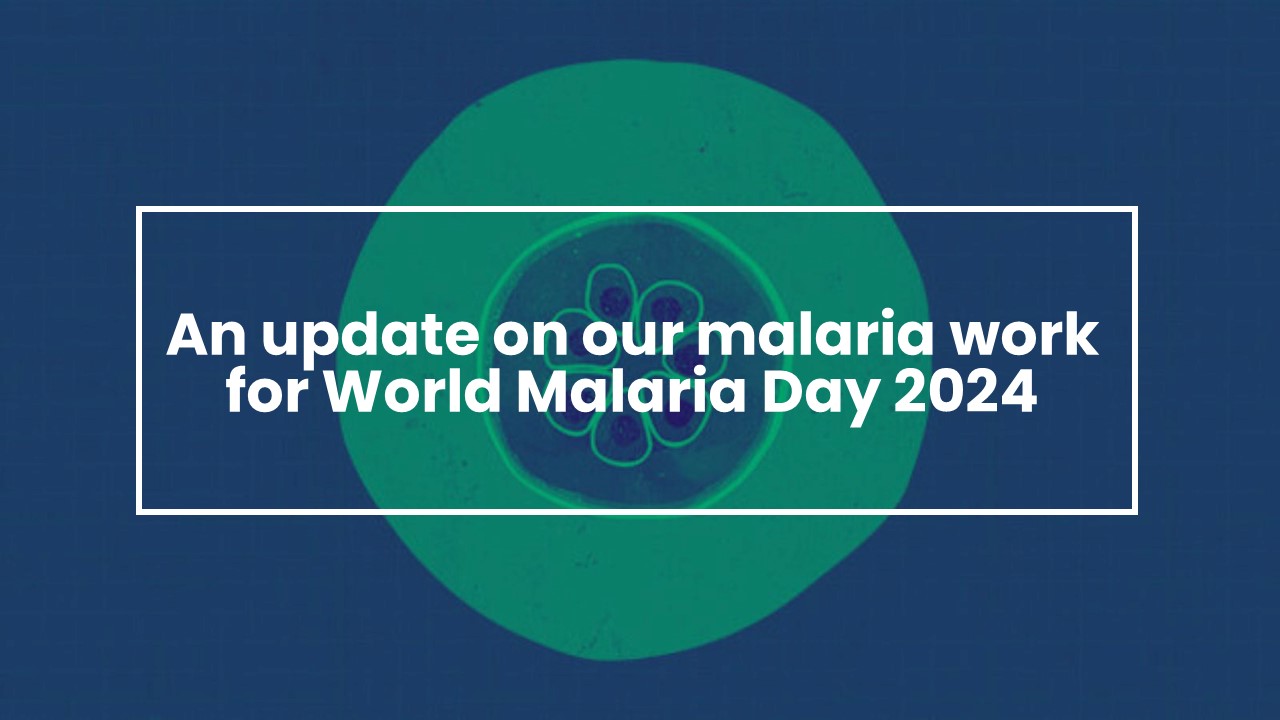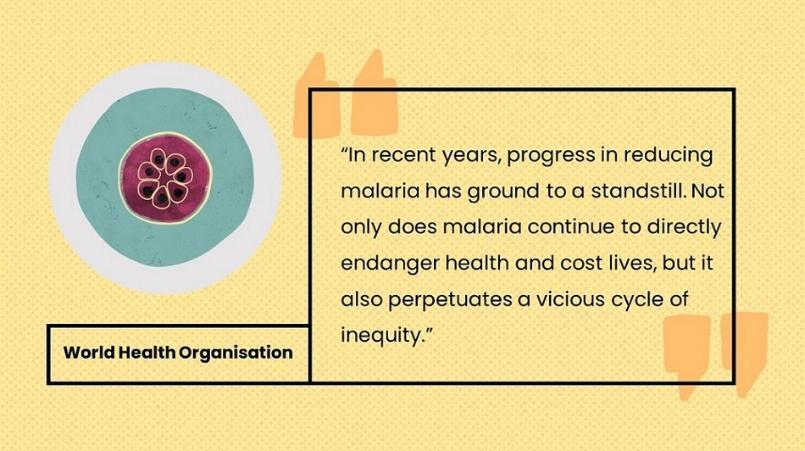
We’re using World Malaria Day to highlight our new part in the world’s ongoing efforts to eradicate malaria.
What is World Malaria Day?
Every year since it was instituted in 2007, 25 April is World Malaria Day. The World Health Organisation (WHO) created World Malaria Day as “an occasion to highlight the need for continued investment and sustained political commitment for malaria prevention and control.”
Malaria is a disease caused through a parasite transmitted by female Anopheles mosquitoes. It is a life-threatening disease that is both preventable and curable, yet still has a devastating impact on people in low- and middle-income countries (LMICs).
Why is malaria research important?
The theme for World Malaria Day 2024 is ‘“Accelerating the fight against malaria for a more equitable world’.
We know that around 90% of reported malaria infections and deaths occur LMICs, but it’s important to understand the vast scope of what that means. According to the WHO nearly half the world’s population were at risk of malaria in 2022.
2022 saw an estimated 249 million cases of malaria and around 608,000 malaria deaths, that’s 30 million more cases and 173,000 deaths from malaria than five years before. Children under the age of 5 accounted for around 80% of all malaria deaths in the WHO Africa Region in 2022 (which itself accounts for 95% of the world’s malaria deaths). In real numbers that’s over 462,000 children, in one of the world’s regions, that died due to a preventable and curable disease.
Malaria symptoms generally start with a fever, chills and headache. Misdiagnosis is common as these symptoms resemble many other diseases, but if malaria is not treated within 24 hours it can progress to severe illness which can lead to death.
Find out more about malaria via the WHO’s malaria playlist on YouTube.
What is CELT’s connection to malaria research?
Although highly successful, new work is needed to improve malaria control efforts. Further decreases in morbidity and mortality from malaria requires new infectious disease control paradigms, decreased transmission rates and improved interventions that reduce medicine adherence challenges.
The Centre of Excellence for Long-acting Therapeutics (CELT) announced a few weeks ago that the funder of the LONGEVITY project, Unitaid, have extended our grant for an additional three years. The original LONGEVITY grant was based around co-Directors Prof. Andrew Owen and Prof. Steve Rannard leading researching to develop and understand long-acting therapeutics for devastating diseases that disproportionately impact LMICs, which includes malaria prevention.
The new extension not only takes LONGEVITY to December 2027, but includes additional activities and more specificity around the next stages of our work with malaria prevention.
What are the next stages of LONGEVITY’s malaria work?
Part of our new efforts towards broadening the long-acting technologies available includes exploratory microarray patch (MAP) development for malaria. If successful, this would be an important step towards a patch a person could wear on their skin for a few hours, that after removal slowly released relevant medication into their body over a protracted period of time.
MAPs could have a dramatic impact on ease and tolerability of malaria prevention, particularly in neonates, infants and children who we know have the highest malaria death rate. This benefit would also extend to adherence, retention in care and suppression of the pathogen, as well as a better understanding of the durations of exposure achievable in humans.
CELT will develop new long-acting drug formulations, and assess what benefits may be achievable when they are administered. If we are successful in the MAPs for malaria proof of concept, additional funding will be sought to translate MAP products through larger scale preclinical and clinical evaluation leading to approval for manufacture and use. LONGEVITY involves many critical international partners, but our work on MAPs is underpinned by a hugely valuable collaboration with Prof. Ryan Donnelly at Queens University Belfast.
The fundamental goal of the LONGEVITY project is making long-acting therapeutics for the key diseases, including malaria, available in LMICs. This requires not just available stock but helping shape infrastructure to get them to the people that need them. If proof of concept is successful, downstream development will ensure that agreements are in place to maximise availability in LMICs.
The LONGEVITY project aims to simplify and optimise delivery of antimalarial drugs in the hope of making strides towards addressing this enormous unmet healthcare need.
Find out more about the LONGEVITY project's malaria work
The LONGEVITY Project is funded by global health agency Unitaid


The project also involves critical partners and collaborators in the Clinton Health Access Initiative, Johns Hopkins University, Medicines Patent Pool, Tandem Nano Ltd., Treatment Action Group and the University of Nebraska Medical Center






